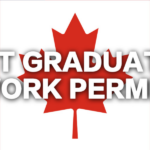5 Ways Foreign Workers Can Legally Work in Canada Opportunities
Canada has long been recognized as a land of opportunity, attracting individuals from around the globe seeking to advance their careers. For foreign workers, understanding the pathways to legally work in Canada is crucial, especially with programs like the Program and the International Mobility Program (IMP). In this post, we will explore five ways foreign workers can successfully navigate these programs and obtain t exemptions, allowing them to thrive in Canada’s diverse workforce.
Understanding the International Mobility Program
The International Mobility Program is designed to facilitate the entry of foreign workers into Canada without the need for a Labour Market Impact Assessment (LMIA). This program enables Canadian employers to hire foreign nationals for specific types of jobs that meet certain criteria, participating in the IMP may be eligible for exemptions, making it an attractive option for those seeking employment in Canada.

Categories Under the Foreign Worker Program
The Foreign Worker Program comprises various categories tailored to different types of foreign workers. These categories include:
- Temporary Foreign Worker Program (TFWP): Requires employers to obtain an LMIA, demonstrating that no Canadian citizens or permanent residents are available to fill the position.
- International Mobility Program (IMP): Offers work permit exemptions for foreign workers in specific scenarios, such as intra-company transferees, international agreements, and open work permits.
By understanding the distinctions between these programs, foreign workers can better assess their eligibility and streamline their application process
Work Permit Exemptions
One of the most appealing aspects of the International Mobility Program is the opportunity for exemptions. Certain foreign workers can enter Canada without needing a traditional work permit. Examples of exemptions include:
- Intra-company transferees: Employees of multinational companies who are transferred to a Canadian branch.
- Participants in international agreements: Individuals coming to Canada under free trade agreements, such as the United States-Mexico-Canada Agreement (USMCA).
- Youth mobility programs: Initiatives that allow young people from partner countries to work and travel in Canada.
Foreign workers should explore these exemptions to take advantage of the benefits offered by the IMP and the Foreign Worker Program.


Navigating the Canada Work Permit Process
While the International Mobility Program offers various avenues for work permit exemptions, many may still need to apply for a Canada work permit. The application process typically involves:
- Obtaining a job offer: A valid job offer from a Canadian employer is essential.
- Gathering required documents: This may include proof of identity, educational qualifications, and any other supporting materials.
- Submitting the application: Foreign workers can apply online or through paper application forms, depending on their situation.
Understanding the application process is vital for foreign workers aiming to secure a Canada work permit and navigate the legal requirements effectively.
Seeking Professional Guidance
Given the complexities of the immigration system and the various programs available, may benefit from consulting with an immigration lawyer or consultant. These professionals can provide valuable insights into the Program, work permit exemptions, and the International Mobility Program, ensuring that applicants follow the correct procedures and maximize their chances of success.
For looking to legally work in Canada, understanding the intricacies of the International Mobility Program and the Program is essential. By exploring exemptions and navigating the Canada work permit process effectively, individuals can unlock a world of opportunities in Canada’s thriving job market. Seek professional guidance to ensure a smooth transition and embark on your journey to a successful career in Canada.
What is the International Mobility Program (IMP)?
The International Mobility Program (IMP) allows Canadian employers to hire without the need for a Labour Market Impact Assessment (LMIA). This program facilitates the entry of individuals who can contribute to Canada’s economy through various categories, including intra-company transferees, international agreements, and youth mobility programs.
Who is eligible for work permit exemptions under the Program?
Eligibility for exemptions under the Program varies based on the specific category of the International Mobility Program. Common exemptions include intra-company transferees, individuals covered under international trade agreements, and young people participating in mobility programs. Each category has its own criteria, so it’s important to review the requirements specific to your situation.
How can I apply for a Canada work permit?
To apply for a Canada , you typically need a valid job offer from a Canadian employer. The application process involves gathering required documents, such as proof of identity and qualifications, and then submitting the application either online or through paper forms. It’s important to ensure that all necessary information is included to avoid delays.
Should I seek professional help when applying for a work permit in Canada?
While it is possible to navigate the application process on your own, seeking professional guidance from an immigration lawyer or consultant can be beneficial. They can provide expert advice, help you understand the intricacies of the Program and the International Mobility Program, and ensure that your application is completed accurately, increasing your chances of approval.







